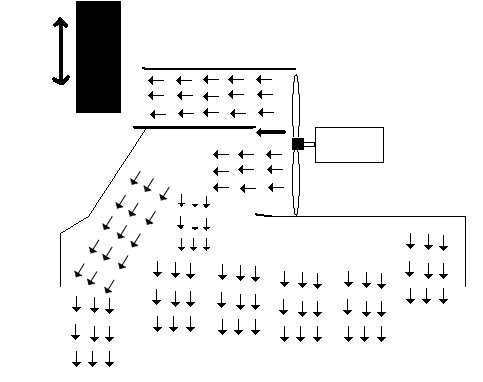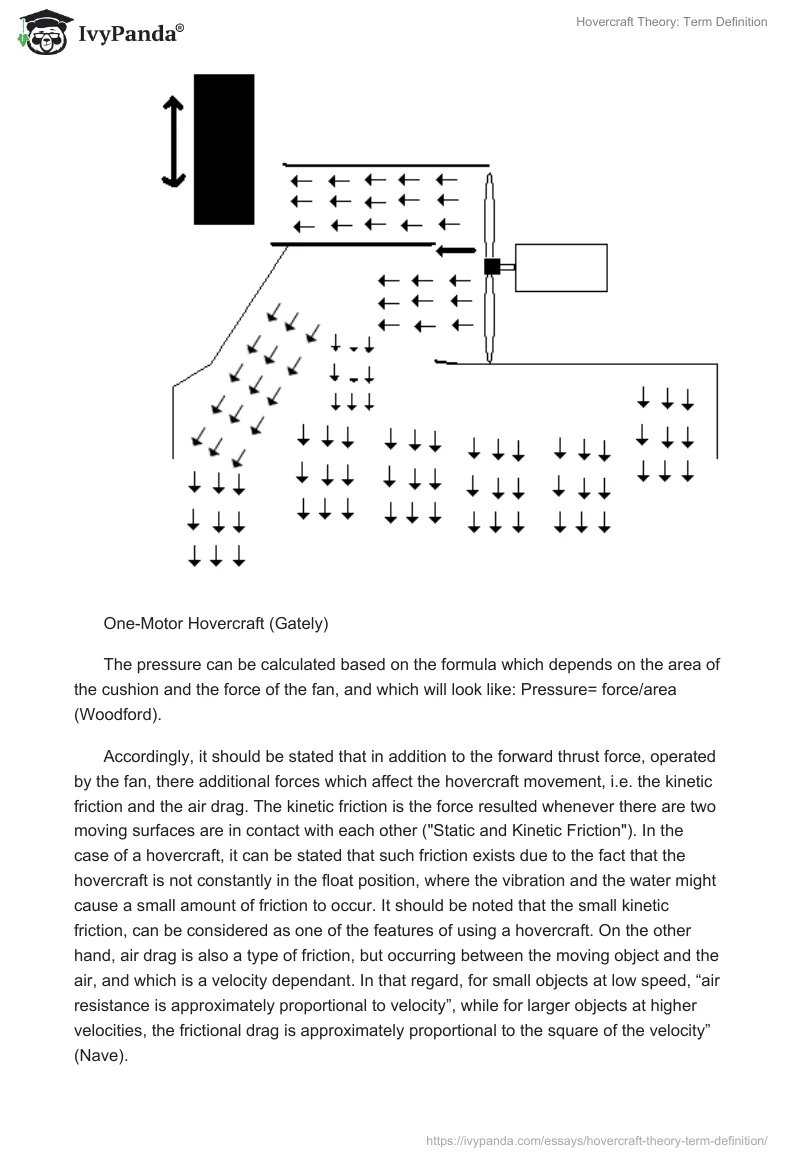Introduction
A hovercraft, also known as Air Cushion vehicle (ACV) as the title implies is a type of vehicle using a cushion of pressured air to float over and move. The main idea of the hovercraft as it is today was first explored by the British engineer Sir John Thornycroft, who introduced the idea of using a cushion system to reduce the drag of water on boats and ships. The idea was later developed with the introduction of airplanes, but nevertheless, the construction of hovercrafts close to the used today did not gain much interest until after the World War II with the contribution of Christopher Cockrell, who is considered the father of the hovercraft (“The History of Hovercraft and Air Cushion Vehicles”). Examining the principles of hovercraft works, this paper provides an overview of the main theories used for hovercraft operation.
Theory
The basis of hovercraft theory is the operation of two forces, i.e. the force lifting the hovercraft over the ground, and the force that moves the aircraft forward. The first force is created by a fan pushing air under the hovercraft. The cushion forces only small amounts of air to be escaped, and when the amount of air pushed into the cushion cannot exceed the amount of air released, the hovercraft reaches an equilibrium point, at which it is floating over the ground. The moving force accordingly is caused by a flow of air pushed horizontally through another fan (Consten; Woodford; RC Hovercraft). It should be mentioned that the latter represents a two motor system in which there is a fan for each force, while in a simpler construction one single motor can be used pushing the air in two directions as shown the figure below.

The pressure can be calculated based on the formula which depends on the area of the cushion and the force of the fan, and which will look like: Pressure= force/area (Woodford).
Accordingly, it should be stated that in addition to the forward thrust force, operated by the fan, there additional forces which affect the hovercraft movement, i.e. the kinetic friction and the air drag. The kinetic friction is the force resulted whenever there are two moving surfaces are in contact with each other (“Static and Kinetic Friction”). In the case of a hovercraft, it can be stated that such friction exists due to the fact that the hovercraft is not constantly in the float position, where the vibration and the water might cause a small amount of friction to occur. It should be noted that the small kinetic friction, can be considered as one of the features of using a hovercraft. On the other hand, air drag is also a type of friction, but occurring between the moving object and the air, and which is a velocity dependant. In that regard, for small objects at low speed, “air resistance is approximately proportional to velocity”, while for larger objects at higher velocities, the frictional drag is approximately proportional to the square of the velocity” (Nave).
It can be seen that despite the presence of various theories related to the hovercraft operation, it can be seen that the main principle is rather simple, which applying a force on a floating object.
Works Cited
“The History of Hovercraft and Air Cushion Vehicles”. 2009. Web.
“Static and Kinetic Friction”. ISU. 2009. Web.
Consten, H.J.L.M. “Control of a Model Sized Hovercraft”. 2003. The University of New South Wales. Web.
Gately, Bob. “Hovercraft Theory”. 2006. Web.
Nave, C.R. “Air Friction”. 2005. Georgia State University. 2009. Web.
RC Hovercraft. “Hovercraft Theory”. 2009. Web.
Woodford, Chris. “Hovercraft”. 2009. Explainthatstuff.com. Web.


